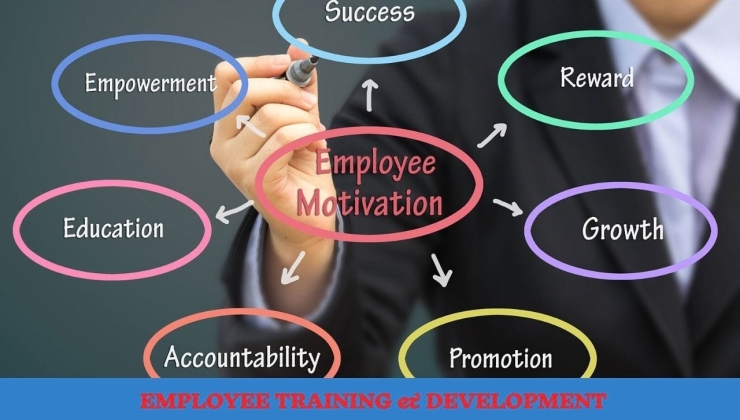In the competitive landscape of modern business, employee development programs have emerged as a crucial element for organizational success. Investing in the growth and development of employees not only enhances their skills and performance but also fosters a positive work environment, boosts morale, and contributes to the company’s overall growth. This article explores employee development programs’ benefits, different development initiatives, and strategies for implementing effective programs in your organization.
Importance of Employee Development
Employee development is an initiative that helps employees improve their skills, knowledge, and abilities. It encompasses a variety of activities, including training, mentoring, education, and career development. The importance of these programs cannot be overstated, as they provide a range of benefits for both employees and the organization.
Benefits for Employees
1. Skill Enhancement and Career Growth
Employee development programs provide opportunities for skill enhancement, essential for career growth. Employees can acquire new competencies through targeted training and education and stay updated with industry trends. This continuous learning process prepares them for more advanced organisational roles, facilitating career progression.
2. Increased Job Satisfaction and Motivation
When employees feel their employer is invested in their growth, their job satisfaction and motivation levels increase. Development programs demonstrate that the organization values its employees and is willing to invest in their future. This leads to higher engagement and a more positive attitude towards work.
3. Improved Performance and Productivity
Enhancing their skills and knowledge allows employees to perform their tasks more efficiently and effectively. Development programs help employees stay current with new technologies and methodologies, improving their overall performance and productivity. This benefits the individual and contributes to the organization’s success.
4. Enhanced Innovation and Creativity
Exposure to new ideas and perspectives through development programs can stimulate employee innovation and creativity. Training sessions, workshops, and courses provide a platform for employees to explore new concepts and approaches, which can lead to innovative solutions and improvements in the workplace.
Benefits for Organizations
1. Increased Employee Retention
Employee development programs are a powerful tool for increasing employee retention. When employees see opportunities for growth and advancement within the organization, they are more likely to stay. This reduces turnover rates and the associated costs of hiring and training new employees.
2. Attraction of Top Talent
Organizations prioritising employee development are more attractive to top talent. Prospective employees seek employers offering career growth opportunities and professional development. By promoting development programs, companies can attract highly skilled candidates eager to grow and contribute.
3. Building a Skilled Workforce
Development programs ensure the workforce is equipped with the latest skills and knowledge. This is particularly important in industries where technology and best practices constantly evolve. A skilled workforce can more easily adapt to changes and maintain a competitive edge in the market.
4. Positive Organizational Culture
A commitment to employee development fosters a positive organizational culture. It promotes a learning environment where employees are encouraged to grow and collaborate. This culture of continuous improvement and support can enhance team cohesion and morale, leading to a more productive and harmonious workplace.
Types of Employee Development Programs
1. On-the-Job Training
On-the-job training involves learning by doing. Employees acquire new skills and knowledge while performing their regular job duties. This type of training is practical and immediately applicable, making it highly effective for skill development.
2. Mentoring and Coaching
Mentoring and coaching programs pair employees with experienced colleagues or external coaches who provide guidance, support, and feedback. These relationships can help employees navigate their career paths, develop new skills, and gain valuable insights from their mentors’ experiences.
3. Workshops and Seminars
Workshops and seminars offer intensive, focused training on specific topics. These sessions can be conducted in-house or by external providers, covering various subjects, from technical skills to soft skills like communication and leadership.
4. Continuing Education
Continuing education programs encourage employees to pursue further education through courses, certifications, or degree programs. Organizations can support these efforts by offering tuition reimbursement or flexible schedules to accommodate learning.
5. Cross-Training
Cross-training involves teaching employees to perform tasks outside their usual job responsibilities. This enhances their skill set and increases flexibility within the organization, as employees can fill in for each other when needed.
Implementing Effective Employee Development Programs
1. Assess Training Needs
Begin by assessing your employees’ and organization’s training needs. Identify skills gaps and areas where additional training could improve performance and productivity.
2. Set Clear Objectives
Establish clear objectives for your development programs. Define what you aim to achieve, such as improved skills, increased retention, or enhanced innovation, and align these goals with your overall business strategy.
3. Provide Diverse Learning Opportunities
Offer various learning opportunities to cater to different learning styles and preferences. This could include formal training sessions, online courses, mentoring, and hands-on experiences.
4. Encourage Participation
Promote employees’ benefits and provide incentives to encourage them to participate in development programs. Create a supportive environment where continuous learning is valued and rewarded.
5. Measure and Evaluate
Regularly measure and evaluate the effectiveness of your development programs. Gather feedback from participants, track performance improvements, and adjust programs as needed to ensure they continue to meet organizational and employee needs.
Conclusion: Creating a Culture of Continuous Learning
Employee development programs are vital for employees’ and organisations’ growth and success. By investing in your workforce’s continuous learning and development, you can enhance skills, boost morale, and build a more innovative and productive organization. Implementing effective development programs requires careful planning, clear objectives, and a commitment to fostering a culture of continuous learning. With these elements in place, organizations can unlock the full potential of their employees and achieve long-term success.

